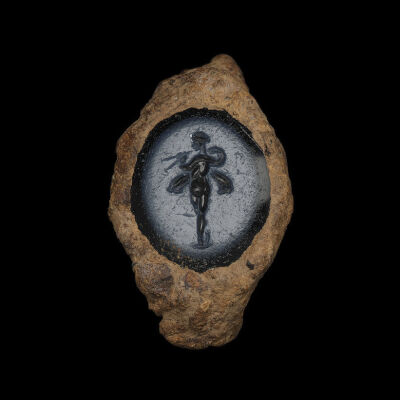Intaglio - Maenad
Name/Title
Intaglio - MaenadEntry/Object ID
L.2021.161Description
Nicolo intaglio depicting a Maenad dancing and playing the double pipes (‘auloi’). It is set on a much decayed iron ring. Possibly Julio-Claudian. It may have been brought to Newstead at the time of the Agricolan occupation. Part of the Cruickshank collection of finds from Newstead, Roxburghshire.Use
Intaglios were both fashionable and practical, and would be used as a signature of the wearer.Context
The artifact is an important feature for the collection because it aids in the understanding of the religious and personal styles that were represented at the Trimontium fort during Roman occupation.Collection
National Museums Scotland, Cruickshank CollectionCategory
Intaglio
Jewellery
Acquisition
Accession
X.2000.17.3Source (if not Accessioned)
Caroline and Jack CruickshankNotes
LoanMade/Created
Time Period
1st - 2nd centuryJewelry Details
Gem
NicoloEthnography
Cultural Region
Location
Trimontium Roman Fort Site, NewsteadCountry
Scotland* Untyped Cultural Region
United KingdomCulture/Tribe
Roman

